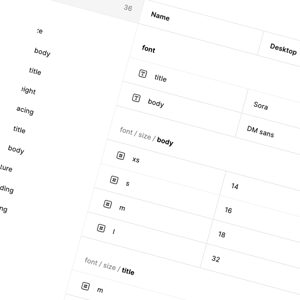
So, is there anything that can be done to mitigate this? Well, as any doctor will tell you, prevention is better than cure. Expert examinations and honest self-assessments of lifestyle, diet, and exercise can go a long way to ensure that the goal of a long and healthy life can be achieved.
The same can be said for digital products. They might work seamlessly for years, delivering an exceptional user experience and conversions to match—but without a forward-thinking strategic vision and the ability to implement it, at some point the conversions will begin to plateau or drop and your users will move away.
It’s at this point that many businesses, recognising that there is a problem but not knowing how to rectify it, will look for outside support. So what does this support look like?
Rapid diagnosis of common problems
In our article ‘Top 10 UX pitfalls that impact conversion’, we talked about the most common UX and conversion problems that we see in the work we do. When our clients come to us with a conversion pain point, these are the first places we’ll look for a solution:
- Poor or confusing information architecture
- Unclear content and signposting
- Poorly implemented responsive design
- Cluttering
- Lack of trust signals
- Unnecessary steps in a purchase funnel
- Accessibility problems
- Performance issues
Then, once we have a proposition, we can utilise multi-variant testing to validate and assess these solutions in a live environment. This allows us to get meaningful results back very quickly and, as it’s a comparative analysis, should make selecting the best path an easy decision.
Where problems are more nuanced and don’t surface from initial expert analysis, we dig deeper!
Getting to know you better
Specific problems require specific solutions. While a broad understanding of a market sector or a service may help us to onboard quickly, we find that the very best solutions come from a forensic understanding of our clients’ stakeholders, overall goals and pain points.
- Your definition of success for the product
- Your brand - who are you?
- Your company’s overall goals - what do you want to achieve?
- Your customers - who is your target market?
- Your position within your market - what are your competitors doing?
- Your frustrations - what isn’t going well?
Armed with this information we can start to paint a picture of some of the challenges you face, and we can even start to see some of the potential solutions. We will have created a shared, foundational understanding of your business, your challenges, and your customers.
But when it comes to your customers, we don’t stop there…
Getting to know your customers better
While we can draw on our expertise and your knowledge, it’s important to understand that we are not the customer.
So how does this inform our approach?
It means we don’t make assumptions. Or as few as we possibly can! Assumptions can lead to unhappy outcomes. In terms of developing customer and employee-focused products, what you don’t know can hurt you. The best approach, therefore, is to engage with your customers directly, so that we can try to define and document their goals and requirements, and to help us to generate an accurate understanding of their behaviour.
At Shout, we believe there’s no better way of doing this than getting in a room (real-world or virtual) with your customers. All lab session are invaluable, but we find we get the very best results from sessions in our in-house UX Lab at Shout HQ. Not only do we uncover the kind of valuable, honest and surprising feedback that is difficult to capture through analytics, but we are also able to see and understand the thought processes and motivations behind each user's actions as they are making them.
What’s more, our Lab set-up let’s you to see this process first-hand, as we can stream the live session into a secondary location. From here, you can observe the session, and send questions or comments back to the interviewer in real-time, giving you the opportunity to focus on a particularly interesting user action or choice, or even to take the session in a new direction altogether.
Outcomes
Once all of the learnings and outcomes have been collected, we can help you plan a prioritised backlog of activities designed to develop real, workable solutions to your issues.
We might recommend you move straight to implementation, or suggest that you test the solutions out with your customers by building prototypes—just to give you that extra reassurance that you’re going to invest in the right thing.
With regular check-ups, your digital products can have a long and healthy life.























